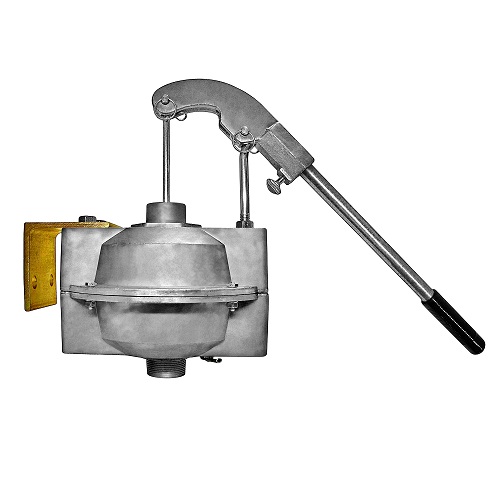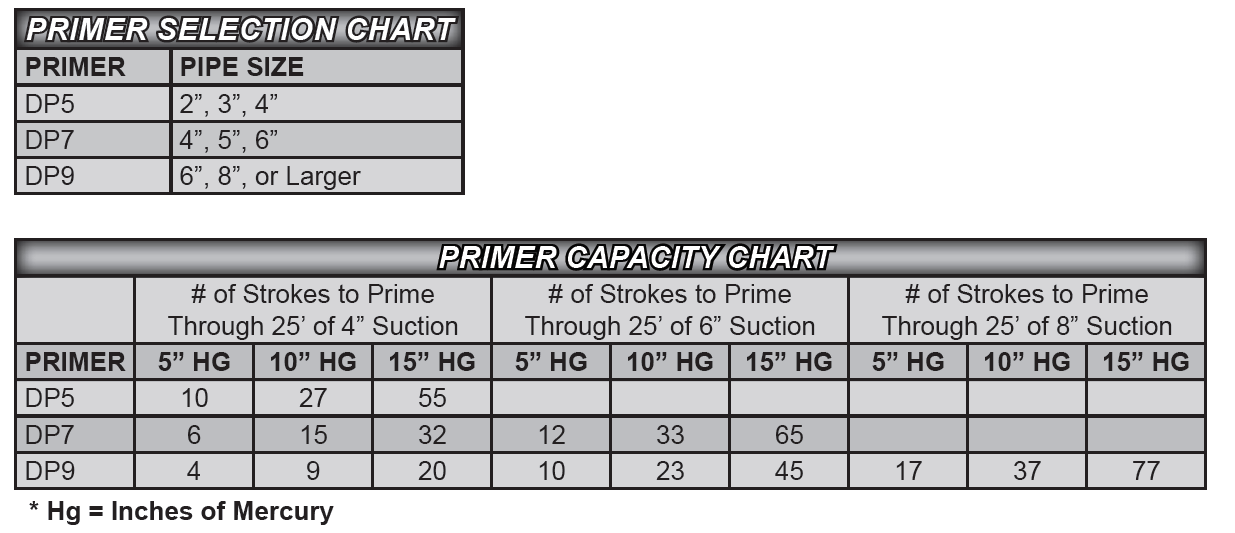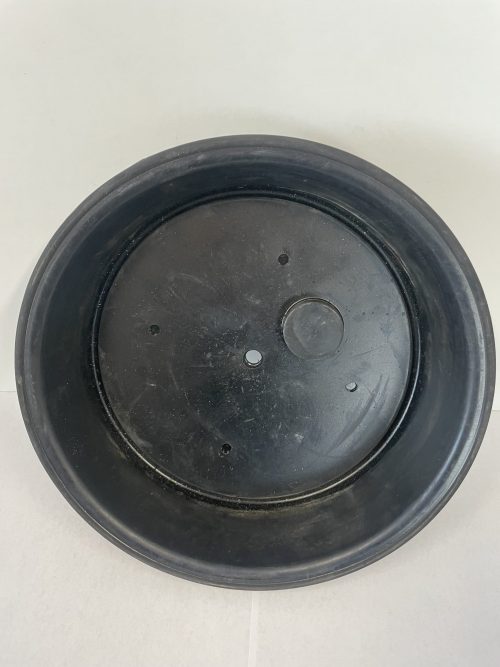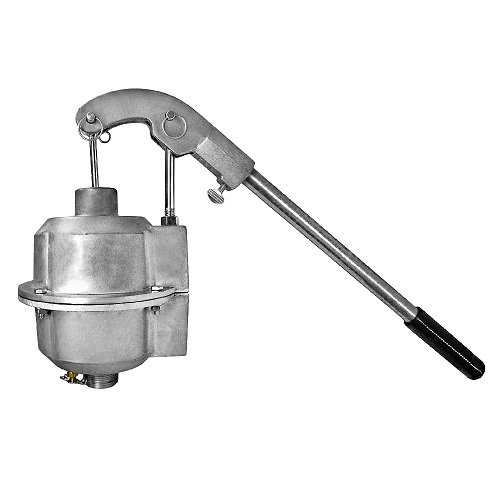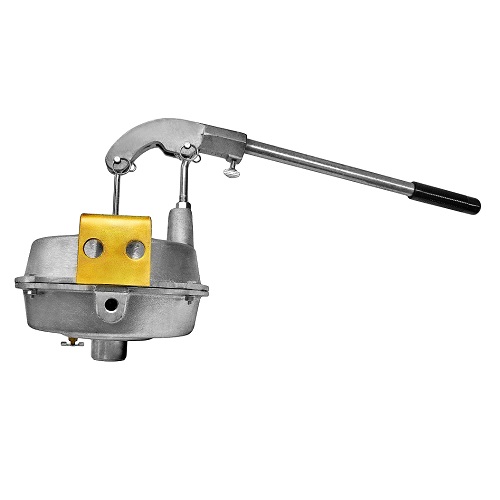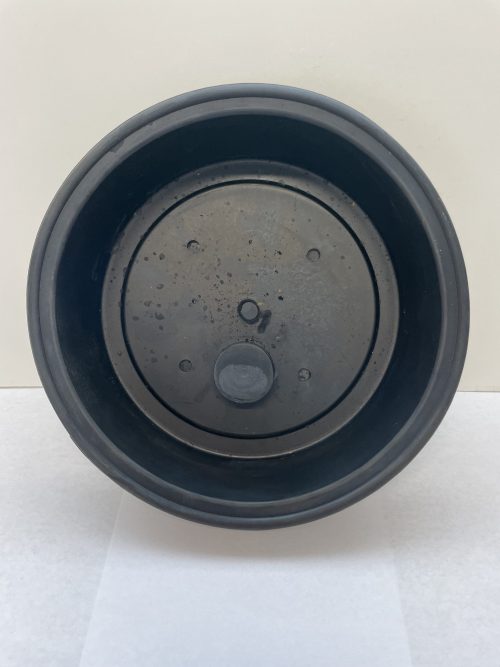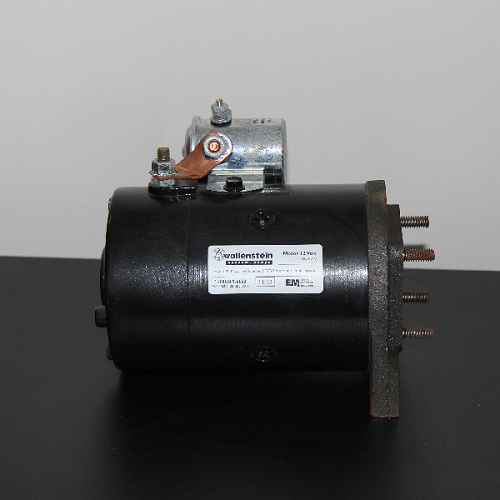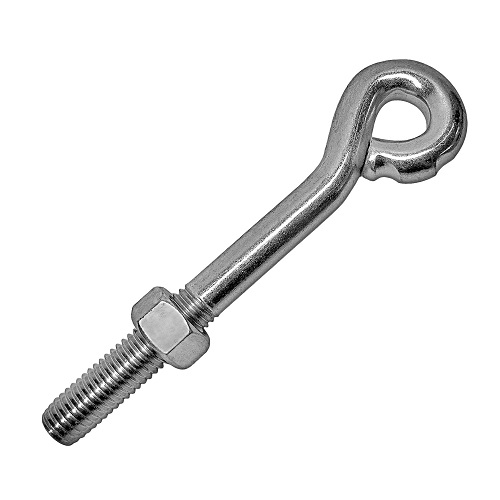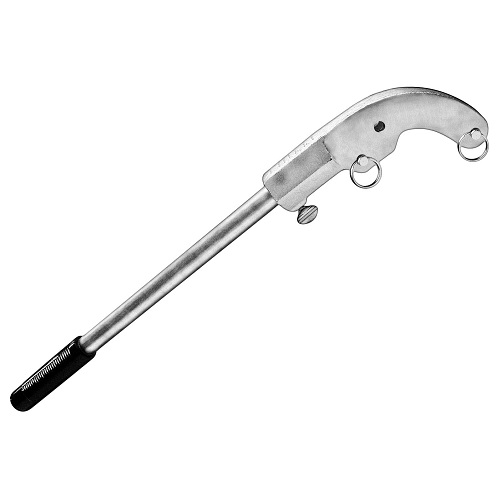Protek Hand Diaphragm Primer #7
Hand Diaphragm Primer Features:
- The Primer can be used on a variety of multiple cylinder engines operating on gasoline or LPG.
- The lightweight plastic float with a rubber cup-type valve provides instant and positive closure when the priming is complete.
- The check valve prevents a reverse flow during normal pump operation.
- The cut-off valve is furnished with the primer.
- The complete operation instructions are permanently attached to the primer and the detailed installation and maintenance instructions are supplied with each unit.
THE HAND DIAPHRAGM PRIMER contains a rubber diaphragm working in an aluminum chamber. A levered handle attached to it by a connecting rod actuates the diaphragm. Air is drawn into the chamber through a suction valve on the up-stroke and discharged through a discharge valve on the down-stroke. The primer body is made of a light weight aluminum alloy. The diaphragm is of molded rubber, and it is extremely tough and longwearing. A rubber air discharge valve, built into the diaphragm, provides a positive seal.


